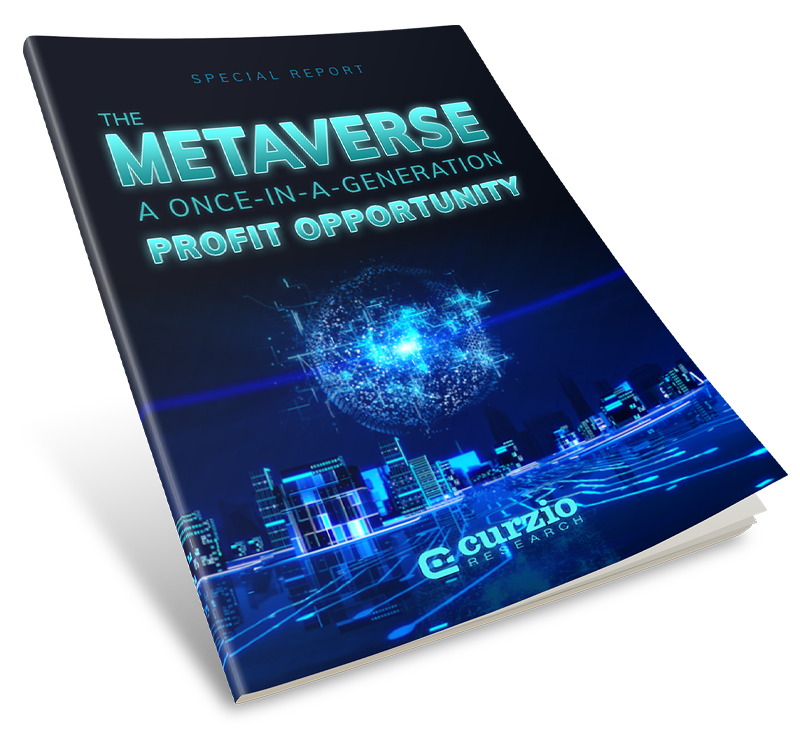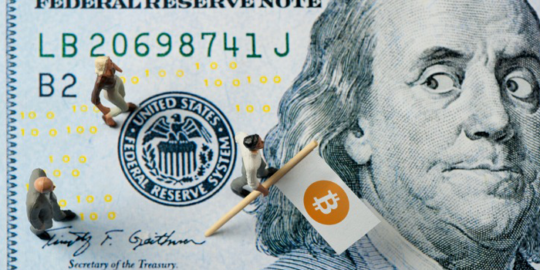Editor’s note: As the crypto sector deals with the fallout from the recent FTX collapse, we’re revisiting Frank’s timeless lesson on crypto investing.
There are over 9,000 cryptocurrencies listed on the popular site CoinMarketCap.
At the top of the list, you’ll find Bitcoin (not really a surprise). Its market cap of over $310 billion is more than double that of Ethereum, No. 2 on the list.
If you keep scrolling, you’ll find other familiar names like Dogecoin and Shiba Inu. Both coins are in the top 25… and cost significantly less than Bitcoin’s roughly $16,000 price tag. For novice investors looking to open a position in cryptos, these familiar and inexpensive names can be appealing…
And the fantasy of getting in before the next big breakout… or being a part of an exciting new billion-dollar coin offering… can be hard to resist. Unfortunately, most of the time, that’s exactly what it is: a fantasy.
If you’re holding tokens outside the top 100, there’s a strong possibility they won’t exist 12 months from now. In fact, there’s a good chance some in that top 100 list won’t last, either.
Most of these coins were launched through initial coin offerings (ICOs), and most are utility tokens. They give you access to a company’s product or service, and that’s it.
Unlike stocks, utility tokens aren’t backed by anything. They’re not investments. This is critical for every crypto investor to understand. In fact, it’s probably the No. 1 mistake crypto investors make.
Here’s an example…
You’re probably familiar with arcade and entertainment giant Dave & Buster’s. The chain restaurant offers pub-style dining paired with bowling, arcade games, and more.
To play games at a Dave & Buster’s arcade, you need to purchase tokens. You put cash in a machine and it gives you a playing card (like a credit card) assigned a token value. This gives you access to every game at any Dave & Buster’s. You simply swipe your card at the machine, and you can play. That’s the value of the token.
Now say you bought these tokens at Dave & Buster’s in 2014. The company had only 70 stores back then. It generated $0.05 a share in profit. And its market cap was $700 million.
Fast forward about five years… Dave & Buster’s grew to 128 stores. It generated over $3 a share in profits on over $1 billion in sales in 2019… while paying a 1.5% dividend yield to its shareholders.
As a token holder, the growth in Dave & Buster’s in recent years means nothing to you. Sure, you can use your tokens at more arcades… but the value of the token hasn’t increased… even though Dave & Buster’s grew its earnings by over 5,000%.
Being a token holder only allows you to use Dave & Buster’s products. The tokens can be used to get prizes like stuffed animals and small electronics, but you don’t OWN a piece of Dave & Buster’s.
That’s how utility tokens work. Whether the company makes billions or goes bust, they offer little to no value to investors. It’s basically a means for companies to raise money—without giving away any equity or voting rights.
Investing in a utility token isn’t like investing in a stock. When you buy a stock, you own a small piece of a company… And if the company does well, so does your investment. When you purchase a utility token, your investment stops there.
Fortunately, there’s an alternative type of crypto asset that’s slowly gaining traction in the market…
I’m talking about security tokens.
Security tokens have the same advantages as cryptocurrencies—like using blockchain technology to create a secure, easily transferable token with the potential for additional benefits.
More importantly, these tokens offer investors ownership in an asset… anything from shares of a company… to real estate property… and even a Ferrari.
Plus, security tokens can offer legally enforceable rights. This may sound complicated, but it’s important to understand. The goal of security tokens is to combine the best parts of cryptocurrencies (the technology) with the best parts of regulated securities (legal rights).
The latter is key… Since security tokens are backed by actual assets, they fall under the regulation and oversight of the SEC. That means you have certain legal rights as a security token investor. (Because of these benefits, we’ve launched our own security token, CURZ, which trades on tZERO.)
Most importantly, you have a right to participate in the company’s profits. You also have the right to receive dividends paid to shareholders.
These rights are a critical source of value for investors… and they cannot be found in more than 99% of utility tokens.
In the post-pandemic environment, most investors ignored details like these. They focused on the potential for big, fast profits in SPACs, meme stocks, and overhyped crypto projects. They poured money into investments without considering any fundamentals. Most of them simply wanted to ride the uptrend for a quick gain.
That mindset is gone now… especially following the collapse of FTX. For one, investors have learned the importance of financial transparency. But there’s another major factor to keep in mind going forward: The best investments are the ones that offer a clear path to generating profits (ideally, by giving investors an ownership stake in something valuable).
Experienced investors should demand more than promises from fast-talking executives about the future of a company… and understand the risks behind investing in utility tokens.
P.S. This Wednesday, November 30, from 1–3 p.m. ET, I’ll be joining HIVE Blockchain for a live event—Going Digital: Investing in the Future of Bitcoin and Blockchain.
Some of the biggest players in the space will be presenting on topics ranging from central bank cryptos… to ESG… to whether Bitcoin really is the future of money.
Plus, they’ll answer listener questions live.
Tune in—for free.
Frank Curzio,
founder and CEO of Curzio Research, is one of America’s most respected stock experts. His research is regularly featured on media outlets like CNBC’s Kudlow Report, The Call, CNN Radio, ABC News, and Fox Business News. His weekly
Wall Street Unplugged podcast—ranked the No. 1 “most listened-to” financial podcast on iTunes—has been downloaded over 12 million times.










Editor’s note: As the crypto sector deals with the fallout from the recent FTX collapse, we’re revisiting Frank’s timeless lesson on crypto investing.
There are over 9,000 cryptocurrencies listed on the popular site CoinMarketCap.
At the top of the list, you’ll find Bitcoin (not really a surprise). Its market cap of over $310 billion is more than double that of Ethereum, No. 2 on the list.
If you keep scrolling, you’ll find other familiar names like Dogecoin and Shiba Inu. Both coins are in the top 25… and cost significantly less than Bitcoin’s roughly $16,000 price tag. For novice investors looking to open a position in cryptos, these familiar and inexpensive names can be appealing…
And the fantasy of getting in before the next big breakout… or being a part of an exciting new billion-dollar coin offering… can be hard to resist. Unfortunately, most of the time, that’s exactly what it is: a fantasy.
If you’re holding tokens outside the top 100, there’s a strong possibility they won’t exist 12 months from now. In fact, there’s a good chance some in that top 100 list won’t last, either.
Most of these coins were launched through initial coin offerings (ICOs), and most are utility tokens. They give you access to a company’s product or service, and that’s it.
Unlike stocks, utility tokens aren’t backed by anything. They’re not investments. This is critical for every crypto investor to understand. In fact, it’s probably the No. 1 mistake crypto investors make.
Here’s an example…
You’re probably familiar with arcade and entertainment giant Dave & Buster’s. The chain restaurant offers pub-style dining paired with bowling, arcade games, and more.
To play games at a Dave & Buster’s arcade, you need to purchase tokens. You put cash in a machine and it gives you a playing card (like a credit card) assigned a token value. This gives you access to every game at any Dave & Buster’s. You simply swipe your card at the machine, and you can play. That’s the value of the token.
Now say you bought these tokens at Dave & Buster’s in 2014. The company had only 70 stores back then. It generated $0.05 a share in profit. And its market cap was $700 million.
Fast forward about five years… Dave & Buster’s grew to 128 stores. It generated over $3 a share in profits on over $1 billion in sales in 2019… while paying a 1.5% dividend yield to its shareholders.
As a token holder, the growth in Dave & Buster’s in recent years means nothing to you. Sure, you can use your tokens at more arcades… but the value of the token hasn’t increased… even though Dave & Buster’s grew its earnings by over 5,000%.
Being a token holder only allows you to use Dave & Buster’s products. The tokens can be used to get prizes like stuffed animals and small electronics, but you don’t OWN a piece of Dave & Buster’s.
That’s how utility tokens work. Whether the company makes billions or goes bust, they offer little to no value to investors. It’s basically a means for companies to raise money—without giving away any equity or voting rights.
Investing in a utility token isn’t like investing in a stock. When you buy a stock, you own a small piece of a company… And if the company does well, so does your investment. When you purchase a utility token, your investment stops there.
Fortunately, there’s an alternative type of crypto asset that’s slowly gaining traction in the market…
I’m talking about security tokens.
Security tokens have the same advantages as cryptocurrencies—like using blockchain technology to create a secure, easily transferable token with the potential for additional benefits.
More importantly, these tokens offer investors ownership in an asset… anything from shares of a company… to real estate property… and even a Ferrari.
Plus, security tokens can offer legally enforceable rights. This may sound complicated, but it’s important to understand. The goal of security tokens is to combine the best parts of cryptocurrencies (the technology) with the best parts of regulated securities (legal rights).
The latter is key… Since security tokens are backed by actual assets, they fall under the regulation and oversight of the SEC. That means you have certain legal rights as a security token investor. (Because of these benefits, we’ve launched our own security token, CURZ, which trades on tZERO.)
Most importantly, you have a right to participate in the company’s profits. You also have the right to receive dividends paid to shareholders.
These rights are a critical source of value for investors… and they cannot be found in more than 99% of utility tokens.
In the post-pandemic environment, most investors ignored details like these. They focused on the potential for big, fast profits in SPACs, meme stocks, and overhyped crypto projects. They poured money into investments without considering any fundamentals. Most of them simply wanted to ride the uptrend for a quick gain.
That mindset is gone now… especially following the collapse of FTX. For one, investors have learned the importance of financial transparency. But there’s another major factor to keep in mind going forward: The best investments are the ones that offer a clear path to generating profits (ideally, by giving investors an ownership stake in something valuable).
Experienced investors should demand more than promises from fast-talking executives about the future of a company… and understand the risks behind investing in utility tokens.
This week’s top movers
P.S. This Wednesday, November 30, from 1–3 p.m. ET, I’ll be joining HIVE Blockchain for a live event—Going Digital: Investing in the Future of Bitcoin and Blockchain.
Some of the biggest players in the space will be presenting on topics ranging from central bank cryptos… to ESG… to whether Bitcoin really is the future of money.
Plus, they’ll answer listener questions live.
Tune in—for free.